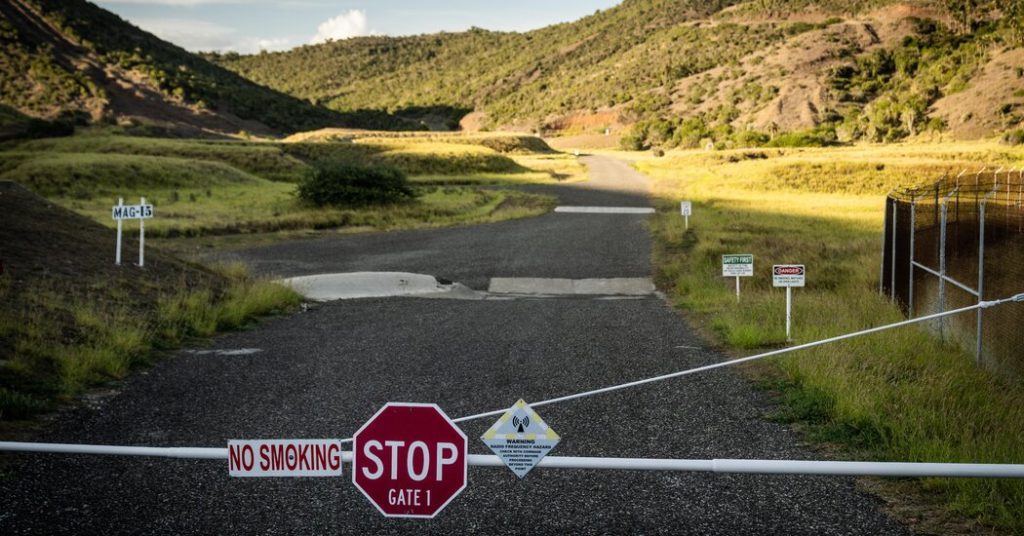The tranquil landscape of Guantánamo Bay, a small Navy base nestled in southeastern Cuba, is poised for a dramatic transformation. Following President Trump’s directive, preparations are underway to accommodate up to 30,000 migrants in a newly constructed tent city, marking the most significant shift in the base’s operations since the establishment of the wartime prison after the 9/11 attacks. This influx of migrants will exponentially increase the base’s population, necessitating a surge in personnel and resources to manage the burgeoning encampment.
The logistical challenges are substantial. Guantánamo Bay, situated behind a Cuban minefield, relies entirely on air and sea supply missions originating from the United States. Essential supplies, ranging from bottled water and frozen food to school materials and government vehicles, arrive bi-monthly via barge. Perishable goods, like fresh produce, are delivered on a weekly basis through refrigerated airlifts. Accommodating a tenfold increase in population will strain this already complex supply chain, demanding a substantial increase in the frequency and volume of these deliveries.
The initial phase of the operation has commenced with the arrival of approximately 200 Marines and soldiers. These troops are tasked with establishing security and laying the groundwork for the tent city, which is located on a desolate section of the base, far removed from the existing prison, residential areas, and essential facilities like the commissary and school. Fifty Army-green tents have already been erected within a chain-link enclosure adjacent to the Migrant Operations Center, a barracks-style building that will serve as a central hub for migrant processing.
Considerable uncertainty shrouds the specifics of the operation. The military remains reticent about its current capacity to receive migrants and the nature of inbound provisions. Furthermore, the Southern Command, which oversees the troops assigned to both the prison and the migrant operation, has declined to disclose the individual in charge or elaborate on a 2017 plan, obtained by The New York Times, detailing the detention of the first 11,000 migrants. The ambiguity extends to the potential utilization of the existing wartime prison, currently housing 15 prisoners in two buildings with a combined capacity of 275 cells. While it’s speculated that consolidating the prisoners into a single building might create space for migrant housing, no official decision has been announced. Conflicting reports further complicate the matter, with some sources suggesting the consolidation has already taken place.
Implementing President Trump’s order will be a monumental undertaking. Retired Major General Michael R. Lehnert, a Marine who established the prison in 2002 and oversaw migrant arrivals during the 1990s, underscores the enormity of the task. He recalls a similar influx of Cuban and Haitian migrants in the 1990s, with the population peaking at 25,000 in May 1995. This previous operation, known as Sea Signal, necessitated the establishment of temporary tent cities, even briefly encroaching upon the base’s golf course. The rapid influx overwhelmed existing infrastructure, forcing the closure of the base school and the evacuation of military families to the mainland for seven months. The current operation echoes this historical precedent, presenting similar challenges in terms of logistics, security, and resource management.
The base’s existing infrastructure, originally designed to support a much smaller population, faces significant strain. Water production, primarily for non-potable uses, would need a drastic increase. Locations previously used for migrant housing in the 1990s, such as a bluff overlooking the ocean and an abandoned airfield, now serve different purposes, including the prison complex and the Camp Justice courthouse facility. The designated area for the new tent city, centered around the Migrant Operations Center, is currently a 120-bed former barracks previously utilized for housing Cubans intercepted at sea. Expanding this facility to accommodate 30,000 individuals, as mandated by the presidential order, represents a significant logistical hurdle. A 2017 plan outlined the construction of six tent camps with a capacity exceeding 11,000 migrants, along with accommodations for 3,640 support personnel. While basic sanitation facilities have already been constructed, scaling these provisions to meet the projected influx will require substantial resources and manpower.
The operational aspects of managing such a large migrant population present further challenges. Based on General Lehnert’s experience in the 1990s, each tent encampment housing 1,500 migrants required 200 security personnel. This suggests a potential need for thousands of troops for basic security alone, not including medical, logistical, and other support staff. Moreover, the responsibility for processing the migrants, the potential role of international organizations like the International Organization for Migration, and the funding mechanisms for this large-scale operation remain unclear. Guantánamo Bay’s remote location and existing infrastructure contribute to high operating costs, adding another layer of complexity to the already daunting task of establishing and managing this migrant encampment.









